This post may contain affiliate links. Please read our disclosure policy.
Get to know the most common hummingbirds in North America to better spot which species make a pitstop in your yard!
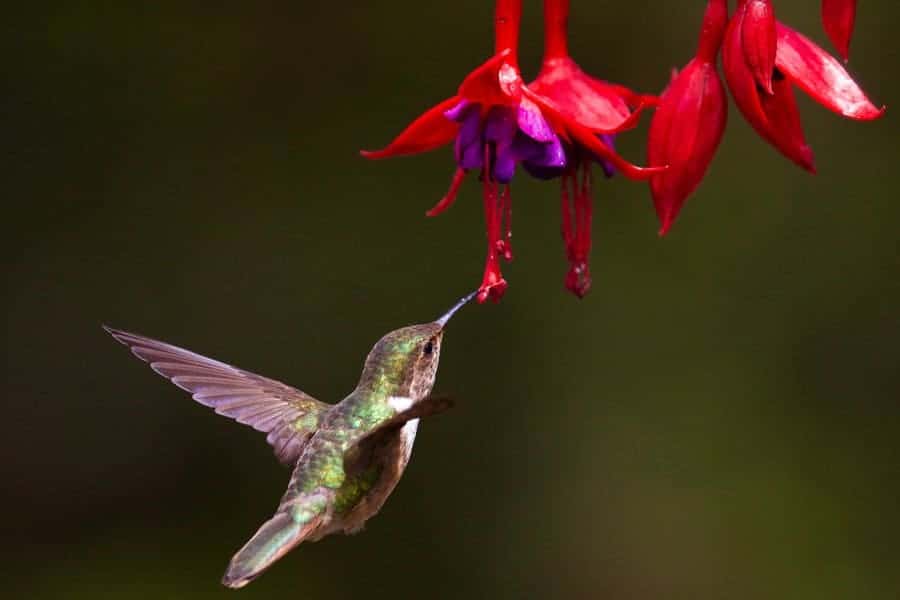
Hummingbirds are quick and beautiful little creatures. If you’ve spotted them in your yard or garden, you know how fun it is to watch them rapidly move through the air or perch on a tubular flower to feed. Maybe you even have a hummingbird feeder set up to give them easy access to a favorite food of theirs: sugar water!
A little known fact is that there are many varieties of hummingbirds in North America. In fact, there are more than 300 hummingbird species in the world! Today, I wanted to share the most common hummingbirds in North America — you very well may have spotted one or a few of these in your outside space!
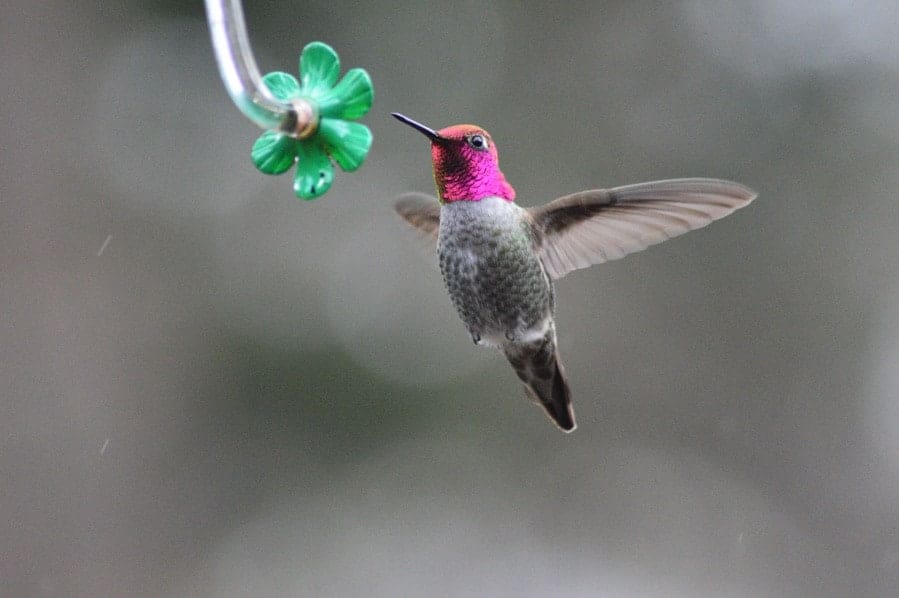
Table of Contents
The Most Common North American Hummingbirds
- Ruby-Throated Hummingbird: Characterized by the bright red throats on the males, ruby-throated hummingbirds are one of the most common species in North America, spotted regularly in the east. Females are less conspicuous, with shimmery green upper parts and white under parts.
- Broad-Tailed Hummingbird: With similar characteristics to ruby-throats, broad-tailed male hummingbirds have a reddish-brown part on their tails. Females have the same reddish-brown color on their flanks and throats. Broad-tails also have louder and more distinctive wing sounds than other species during flight. They can be found in America’s southwestern mountains.
- Rufous Hummingbird: Found along the northern Pacific coast, male rufous hummingbirds can be spotted by their iridescent red-orange throat and orange feathers. Females have subtler orange coloring, with green upper parts, white chest and abdomen, and spotting on the throat. Some are also seen in the southeast and along the Gulf Coast. They are highly territorial.
- Allen’s Hummingbird: Similar coloring to rufous hummingbirds makes Allen’s easy to mistake for the other orange species. But Allen’s males have greener backs and heads, and more orange on their flanks. Female Allen’s look almost the exact same as female rufous. They commonly go to feeders, and they can be found along the coast of California.
- Costa’s Hummingbird: A real unique beauty, Costa’s males have a crown of bright pink or purple feathers and sharply pointed neck feathers that look like a dramatic collar. Females don’t have the same bright iridescence, but they share the same green upper parts and white under parts. Costa’s like dry desert environments and aren’t often found in urban areas. They call southeastern California, southwestern Arizona, and far south Nevada home.
- Black-Chinned Hummingbird: Males are identified by a bright purple band underneath a black neck, while females may show light streaking on the throat with green upper parts and white under parts. Both male and female have very long bills, and black-chins can commonly be spotted from southern California to southwestern Texas.
- Calliope Hummingbird: The smallest North American hummingbird at 3.25 inches in length, calliope males have a striped pink throat that points at the sides. Females don’t have the bright coloring, but do have the bright green upper parts and subtle reddish-brown wash on the flanks. They are less aggressive and territorial because of their size, and can be seen in British Columbia, Idaho, Nevada, Utah, California, Montana, Washington, and Oregon.
- Anna’s Hummingbird: Found year-round along the west coast, Anna’s males have red or pink crowns, while females may have some pink or red spotting on the throat. They like to visit backyards, parks, and gardens.
- Magnificent Hummingbirds: Characterized by dark feathers, long bills, blue throats, and violet crowns, male magnificents are quite beautiful, and females have a more subdued look, with bright green upper parts and light gray under parts. Males and females alike have white spots by their eyes, and they’re one of the largest species in North America at 5-plus inches long. Find them in southeastern Arizona and southwestern New Mexico.
- Broad-Billed Hummingbirds: Similar to magnificents, broad-bills distinguish themselves with a red bill that has a broad base and black tip. They’re also much smaller than magnificents but can also be spotted in southeastern Arizona and southwestern New Mexico, as well.
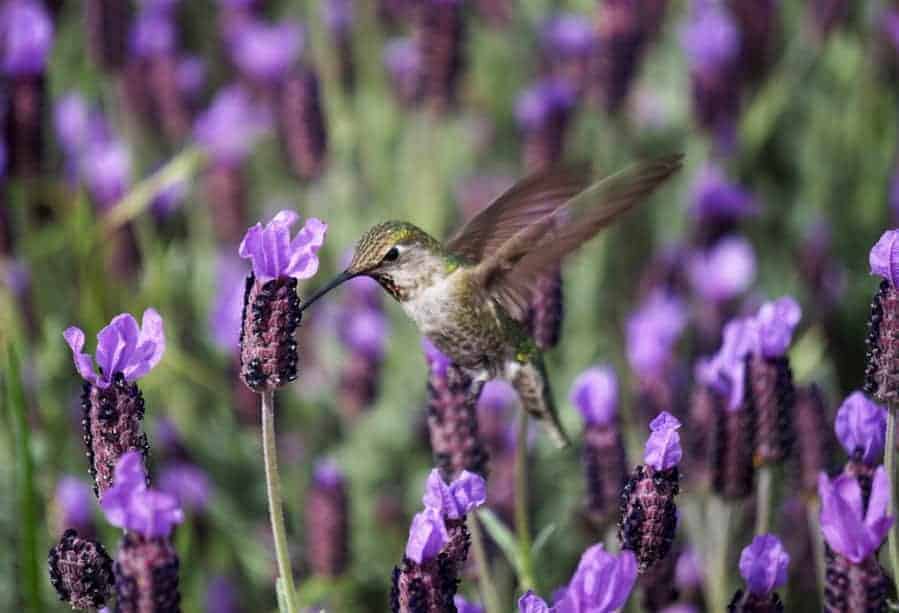
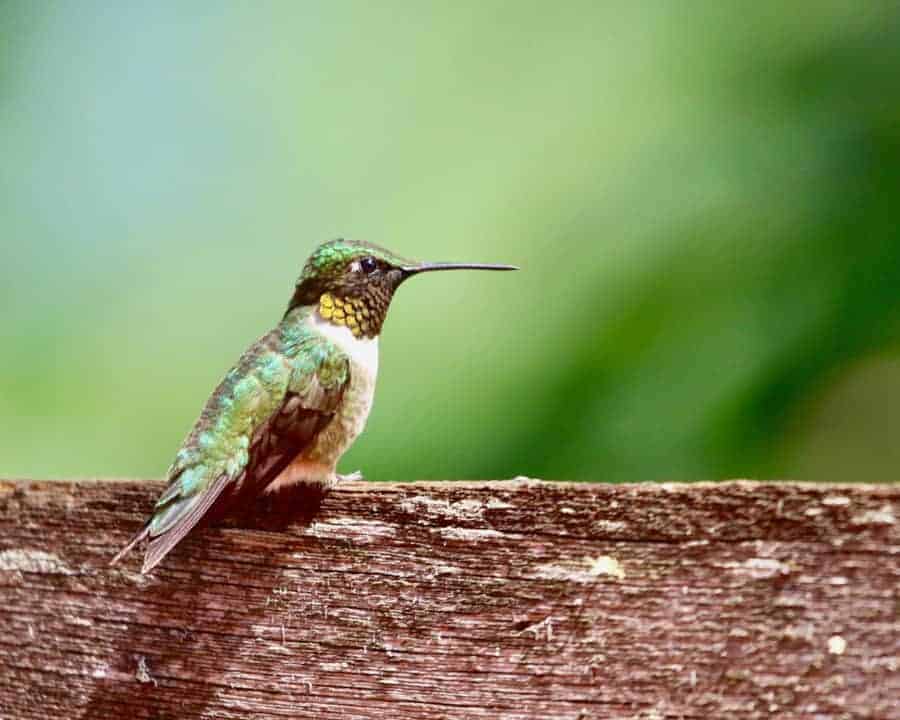
I hope you loved learning more about the wide variety of the most common types of hummingbirds in North America! Shockingly, there are even more than this list, but I wanted to share some regulars that are commonly seen. Keep an eye out for these bold beauties in your own yard, and let me know who you spot!

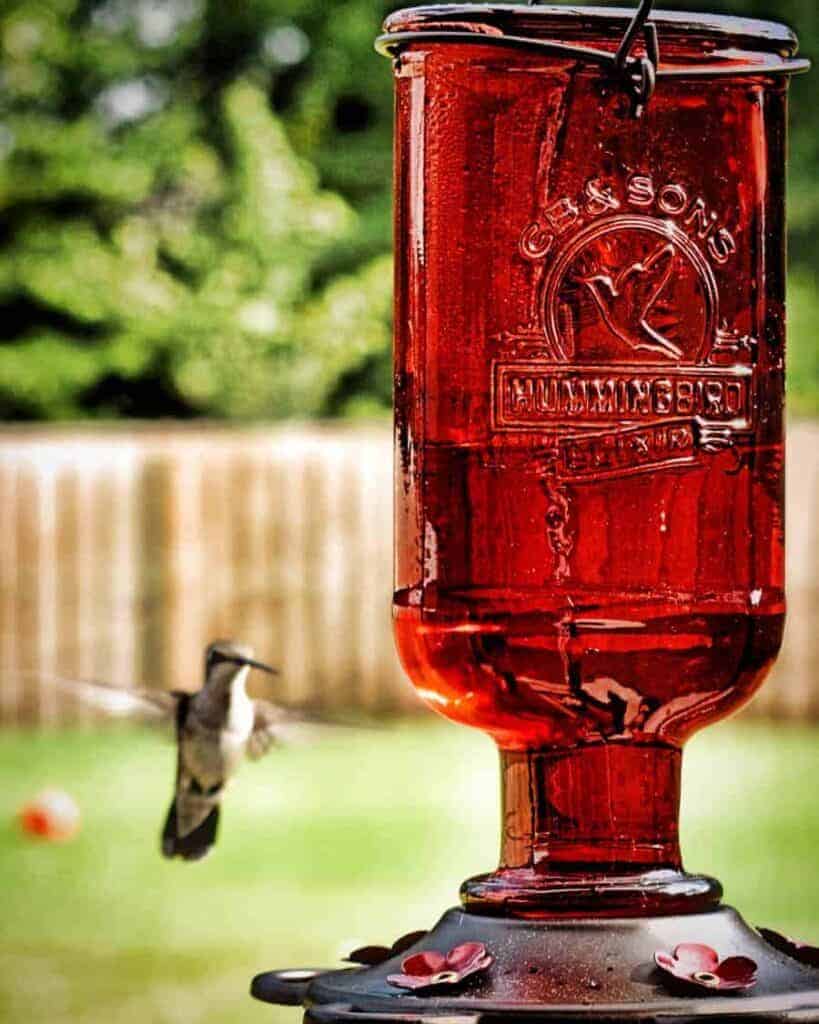






Hi Melissa! Love your hummingbird recipe! Please advise others to hang their hummingbird feeders up and out of reach from cats! I once hung mine from a Shepard’s hook about 4ft tall and my cat caught a hummingbird while it was hovering to feed! I didn’t see him do it but from my front screen door I could see something sticking out of his mouth and my other cat was growling at him to give it up so I went out to stop the argument before it became a full blown fight. At this point I thot he had caught a grasshopper and I was seeing part of a grasshoppers back leg. I was horrified to see the tiny irredescent feathers of a hummers wing protruding from my cat’s mouth and my knee jerk reaction was to give him a quick pop to the back of his head (please. No hateful comments, Gizmo was fine & a cherished family member who lived to be 15 yrs old) and this caused him to expel the tiny bird from his jaws of certain death just as I had hoped and intended. Remember Granny from the old Bugs Bunny Looney toons cartoons when she did the same to her cat Sylvester when he had Tweety bird in his mouth looking all innocent? And thats T exactly how it worked with Gizmo. I quickly but gently picked up the tiny hummer and rushed inside, fully expecting a dead or severely injured bird. I I was shocked to see two little black eyes peeping back at me when I looked at him inside my cupped hands! I placed him in a shoebox on a soft washrag so we could both regain our composure. 10 min passed when I heard a small whirring sounds from the lidded box. He was beating his wings against the sides telling me he wanted out! I quickly went to the back door, stepped out and removed the lid. He gave me one quick look of what appeared to be gratitude, then WHIRRR! In a blur, he was GONE! I make sure my feeder was at least 5 fr from the ground after that!
Cats! Now that sounds like a problem, I haven’t thought about cats trying to catch them but it makes sense!
Thank you Melissa for sharing the easy recipe for hummingbirds also the educational tidbit was also pleasing.not a one full moment .
I am also enjoying watching hummingbirds coming to my backyard. Thank you for sharing the wonderful knowledge of yours. I thought that there are few kinds of hummingbird in North America but you mentioned much ore…I will keep looking what kind of hummingbirds visiting my backyard!
Mari from Western Massachusetts
My house is home to tons of Black-chinned hummers. They show up in late March and start hovering where the seven feeders are SUPPOSED to be. They are fairly territorial of their feeders and favorite flowers until late July…..then they learn to cooperate. Late July brings a migration of Broadtails and they are just down right pissy! They take over and the Black-chins learn to work together…..one flies near the feeder to cause the Broadtail to chase after it…while the chase is going on, a couple of Black-chins zoom in to get a quick drink. I watch this over and over. Some years, a Rufus or two will show up with the Broadtails…..they are even pissier!!!! Then the Broadtails and Black-chins work together. Funny little birds….such a gift to have around!
I love this, I can’t wait to get some feeders and flowers closer to the house! We see them in the garden on the zinnias a bit but not enough to really get to know them!
Great post! We attract a few varieties of hummingbirds to our yard in AZ. It can be difficult to identify them though, even with a decent zoom lens, because their movements are so very quick.
I agree, I have a hard time telling what’s in my own yard, quick little things!